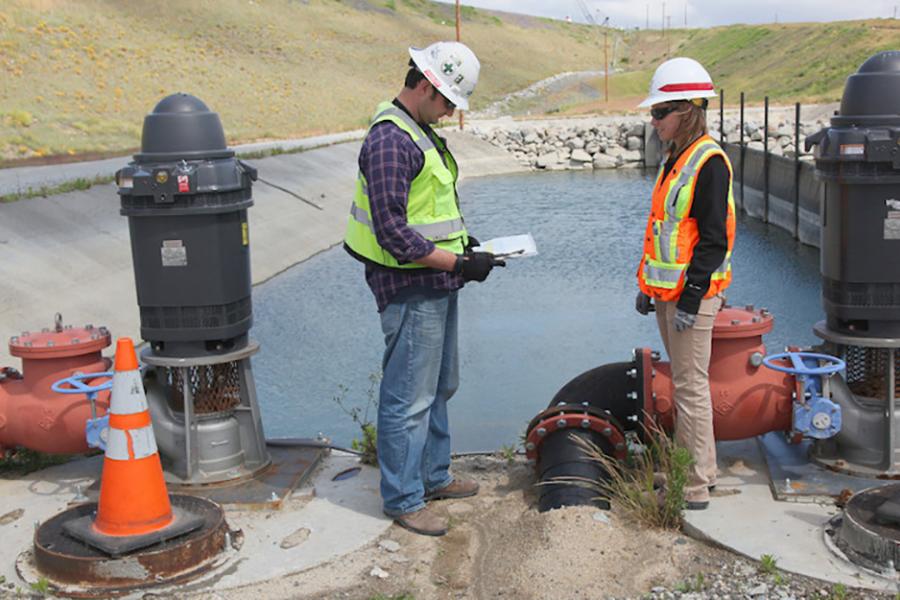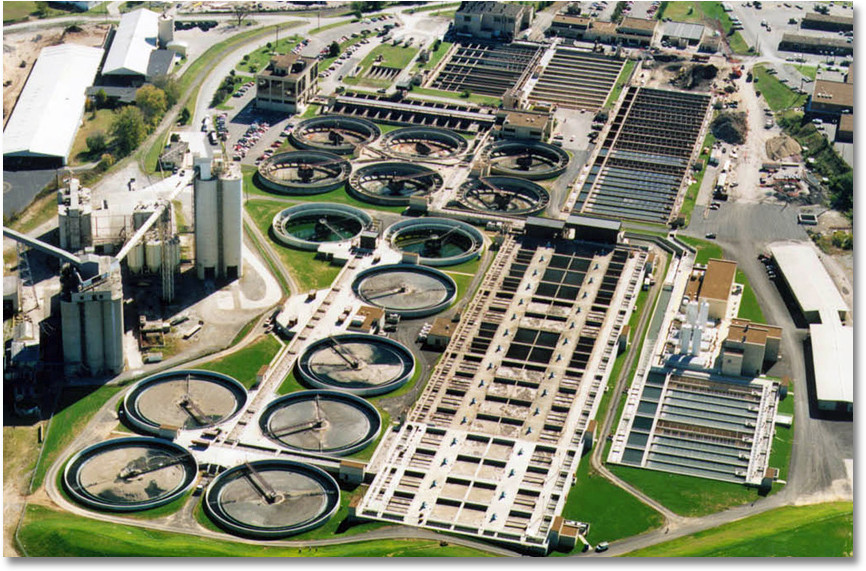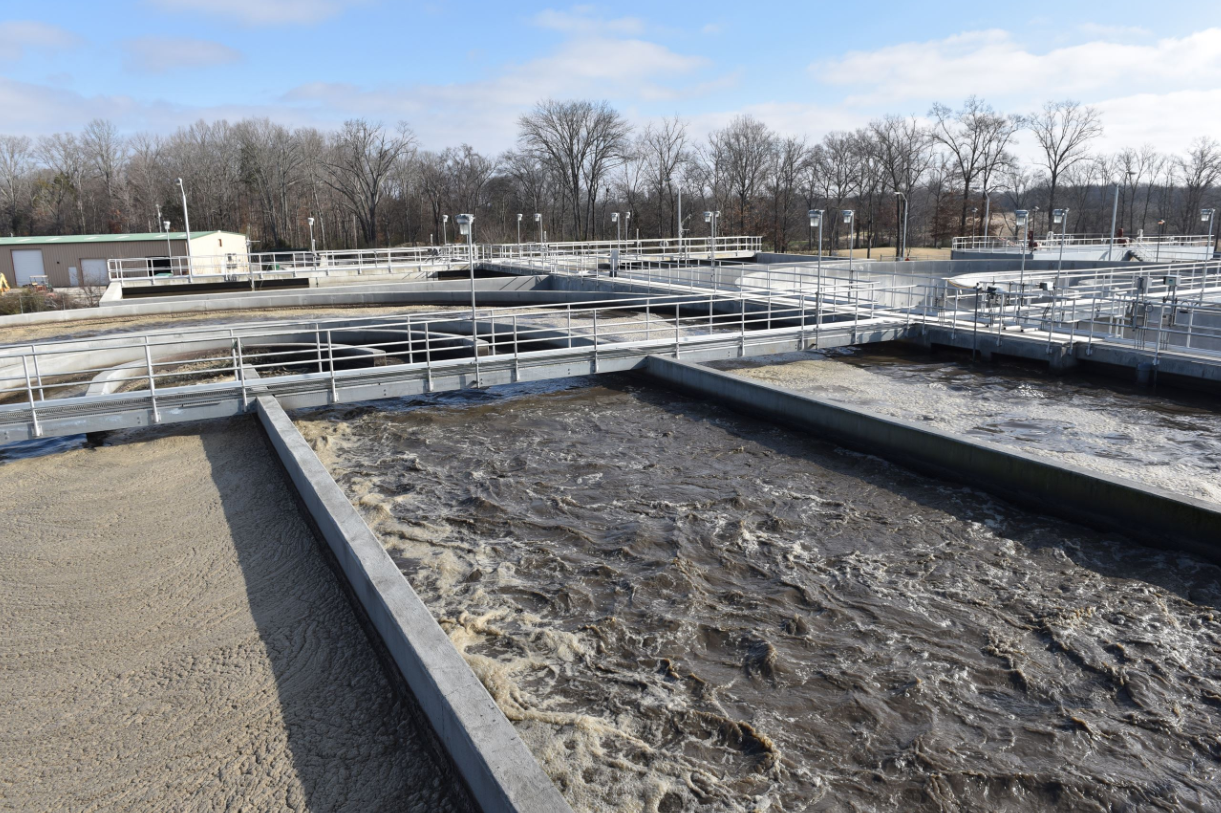Construction costs, growth may requiring rethinking water, wastewater

By KATE COIL
TML Communications Specialist
Managing water and wastewater infrastructure as populations grow and construction and maintenance costs increase was the focus of the most recent Blue Oval Community Impact Meeting, hosted by the Tennessee Department of Economic and Community Development (TNECD).
Ross Colona, an assistant director for local government finance in the Tennessee Comptroller’s Division of Local Government, said there is a definite need for wastewater and water development in the region surrounding the Blue Oval City site.
“The biggest need in West Tennessee is definitely wastewater,” he said. “Wastewater, in my opinion, is much more difficult to plan and manage than drinking water. A lot of local governments and utilities struggle with wastewater because it’s not the easiest thing to deal with. Wastewater also comes with rates that some would say are high, especially when you are dealing with a system that only has 500 to 1,000 customers. It is difficult to manage a system of that size when you are expecting growth.”
Like many communities across Tennessee and the nation, Colona said the main issue for drinking water in West Tennessee is aging infrastructure.
“Utilities have had pipes in the ground for decades upon decades, and some might not have been well taken care of over the years,” he said. “Some have gotten to the point of complete degradation and water loss. I don’t think that’s unique to West Tennessee. I think it’s a utility problem in general.”
John Greer, program director for the Tennessee Association of Utility Districts (TAUD), said the landscape and topography of West Tennessee has made the method of supplying water and wastewater different than in the other two major regions of the state.

“What we see in Middle and East Tennessee are a lot of systems that are connected to each other,” Greer said. “In West Tennessee we don’t see that because we are sitting over the aquifer. In West Tennessee, I can take one of my cowboy boots and dig a well pretty easily. In Middle and East Tennessee, you need C4 and a backhoe to get through the rock. In West Tennessee, we have a lot of lagoons because of the sand concentration and the ability for wastewater to go down through the soil and bit treated in a different manner than in East and Middle Tennessee. Over the years, each small community in West Tennessee was left to fend for itself because they didn’t really need anyone around them. Now, we are to a point where all of these smaller communities are starting to grow together, and we have to figure out the best way to move forward with wastewater treatment.”
Rising costs for infrastructure and treatment may push more communities toward regional solutions.
“Wastewater is not cheap to treat,” Greer said. “With inflation and the spike in chemical and electric costs, it is getting more expensive to treat wastewater. It used to be you would pump it into a lagoon and let it settle down, and you would have to clean out your lagoon every 10 or 20 years. Now, the costs to maintain those lagoons are compounding as are the cost to replace water line. The price of PVC and backhoeing is through the roof. It may come down; it may not. We know the cost won’t drop instantly like it has in other sectors because there is such a backlog and demand on infrastructure. Moving forward, we have to determine the best way to provide wastewater and charge for it so we don’t get in a situation in 40 or 50 years where the systems are dilapidated and we are again struggling to figure out how to replace them.”
Colona said regionalization of utilities may be what is in the best interest of customers.
“At the end of the day, water is about service and water is about math because rates are based on math,” he said. “When we look at solutions, bigger utilities tend to be more successful because there are more resources available for things like proper planning. I know the term regionalization is being thrown around a lot and a lot of local governments don’t like hearing it because they want to retain their sovereignty over their utility. I think you really need to ask yourself why you need to retain ownership of your utility. Keep your city, but make sure your utility helps the community. At the end of the day, it’s about the customer.”
As many water and wastewater operators are retiring, the pool of trained professionals ready to replace them has gotten shallower. A lack of trained professionals may also put a burden on many systems.

“I think that speaks to the staffing of these smaller systems,” Colona said. “Many of these utilities were left to do it on their own with very small staffs. While that does keep your costs down, it makes it difficult for you to plan your utility forward when you only have two or three people on staff who are charged with the day-to-day. They can’t think five years down the road because they’re trying to keep the water on that day. It’s a culmination of how we’ve gotten to this point. There hasn’t been dedicated employees to actually look for the future of the utility, which is necessary for West Tennessee to thrive.”
Greer and Colona agreed there may not be a way to mitigate issues of aging infrastructure, projected growth, and needs for newer and expanded staff without raising rates. However, educating and impressing upon consumers the importance of the services provided by utilities may be one way to reframe rate increases as a necessary and important investment in both personal safety and local infrastructure.
“We need to really evaluate the true worth of our service,” Greer said. “We’ve got to change our theology on how we look at water and sewer. Treated water is the greatest medical advancement in the history of mankind. We have kept more people from being sick and dying because of treated drinking water than any medicine in history. However, we also think of water as free, and it is free, but it’s not free to treat and flow to your house. The people we serve, our customers, want our service to be at the highest quality and the cheapest rate. We as utilities and governments have to start looking at what our product is really worth. When you turn on the tap, knowing that you won’t get sick from drinking that water, what is that worth to you? What is the convenience of not having to get up having to treat your own water worth to you as a customer and as a government.”
Greer said what water and wastewater utilities really sell is the trust that people will have safe drinking water when they turn on the tap and not having raw sewage flowing through their home because a system doesn’t work. By changing the framework of the conversation, Greer said customers can be made to understand the rates offered by water and sewer providers are historically low, especially when compared to other, less essential service providers like phone, internet, and cable providers.
Colona said it would be “ludicrous” to expect rates to stay the same, and that utilities need to consider implementing gradual increases over long time periods before they are forced to implement larger increases in a shorter time frame.

“The cost of everything is higher than it was a year ago, five years ago, and ten years ago, so why should the water rate be the same?” Colona said. “I can guarantee it costs more to treat it because the electricity costs more. When the cost of what goes into your product increases, the cost of that product increases. If you aren’t doing those 2-4% increase over the years – and those increases compound – then your customers are hit with 20% rate increases because eight years ago it was decided water rates aren’t going up on these customers.”
Colona also agreed that the way both providers and customers think about water and wastewater utilities may have to change.
“There is a huge paradigm difference, and I think a lot of local governments look at utilities as part of the local government,” Colona said. “I’m going to tell you when I look at utility, I look at it as if it’s a utility whether its run by a city, a county, or a utility district. Most of the time, customers of a utility aren’t even residents of the city that owns the utility. It is the customer’s utility, but the city runs it for the customers. It is important to remove yourself from saying how is this utility best going to help the city. It needs to be how this utility is going to help the customers it serves, because often that utility expands past the city limits.”
Strategically using depreciation on infrastructure to an advantage is another tactic for utilities. Once it is being used, water and wastewater infrastructure begins to depreciate. By not setting aside funds to deal with the depreciation of infrastructure, many communities are now having to rely on grant funding to replace aging infrastructure rather than facilitate future growth. Colona said successful utilities prepare for depreciation, have adequate cash balances, and use grant money coming in even though they don’t need it to cover basic operations and repairs.
While planning for long-term growth is important, both Greer and Colona advised against a “build it and they will come” mentality when it comes to water and wastewater infrastructure. If infrastructure is built out and no one moves in, current rate payers can get stuck paying for the expansion.
“Projecting growth is a double-edged sword,” Greer said. “We don’t want to ignore growth, but it is really hard to build something like that and have someone who will fit into the mold of what we’ve built. Every entity is different, every development is different, and every town is different. My advice to everyone looking to prepare for future growth is planning and to not go build an empire and expect people are going to come flooding in once you have water and sewer in a certain area. What you need to do is have the ability to grow, but I would remember whatever you build is going to be the responsibility of your current ratepayers moving forward. You have to take care of your current ratepayers while planning for growth.”
Colona expects there will be growth in the Blue Oval City area, but the questions of where this growth will go and how much of it will happen remains unanswered.
“You don’t need to build something ten times the size of what you need because you think everyone is going to come live in your neck of the woods,” he said. “What is more important to know is should that happen what it will take. Go get some opinions or engineering plans that show when this area grows, what it will take. That way you aren’t having to start from square one and can speed up the process. I think Tennessee is poised to be in a really great position when it comes to residential and commercial growth. Just being ready to grow is different than doing it prematurely. ”
Colona said the comptroller’s office provides technical assistance and is always willing to help communities and utilities that want to take a proactive approach rather than a reactive one. The office wants to help local governments and utilities take advantage of their resources to help with future growth.
“We are really happy to be of assistance whenever necessary, and feel free to contact us at any time,” Colona said. “I have heard Comptroller Jason Mumpower say time and time again: ‘It’s always better to call the comptroller before the comptroller calls you.’ I can’t stress that enough. People think they don’t want to whistleblow, so I’ll figure this out on my own. Most of the time, you end up getting into something worse than what is already going on because you didn’t ask for help to begin with. Our utilities office and local government finance really try to serve in a consultant role. We can help improve things and navigate difficult situations.”
Greer said TAUD can work with utilities on everything including supplies, financial services to utilities, and state and federal contracts providing technical assistance.
“We have a wide array of services we offer to both members and non-member,” Greer said. “We work closely with the Comptroller’s office to be a resource for them when communities need help. We can provide everything from the most technical source water protection to financial analysis of systems and legal challenges. We provide training for utility commissioners. We have an apprenticeship program where local utilities can build their workforce from within.”

